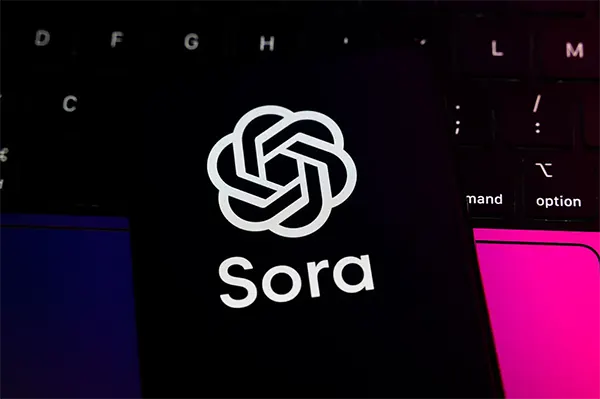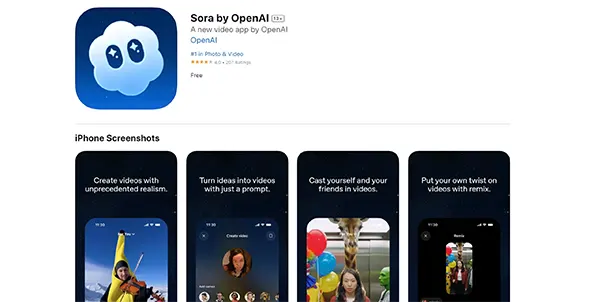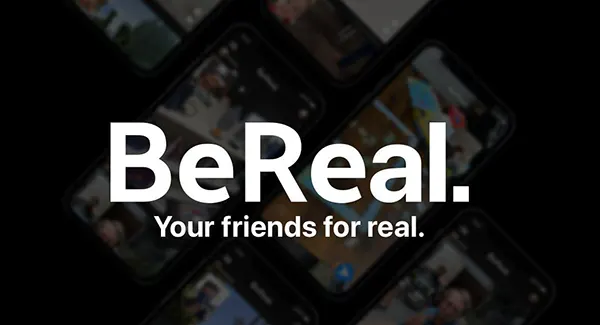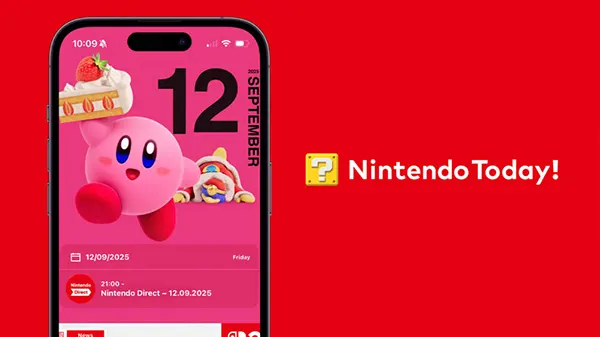
Review of the Sora iOS App: Creating Videos from Text Prompts on iPhone
The rapid development of artificial intelligence has made video generation from text a practical reality. In 2025, OpenAI officially launched the Sora iOS app, which allows users to create realistic, high-quality videos directly from textual prompts. This innovation is redefining how users approach content creation, marketing, and storytelling on mobile devices.
What Is Sora and How Does It Work on iPhone
The Sora iOS app is an AI-powered video generation tool that transforms text inputs into dynamic video clips. It relies on advanced machine learning models trained on thousands of hours of video footage and image sequences, enabling it to interpret complex textual descriptions and render visual scenes in seconds. Unlike traditional editing tools, Sora automates every stage of production — from motion design to lighting — offering creators a fully mobile video studio.
Users can type in detailed prompts, such as “a sunrise over the Alps” or “a cat walking through a city at night”, and Sora will generate a corresponding video sequence. The app supports variable aspect ratios and resolutions, making it ideal for social media, marketing campaigns, or educational projects. According to OpenAI’s latest release notes, the model integrated into Sora for iOS includes optimised neural compression that reduces generation time by up to 30% compared to desktop equivalents.
Another key feature is the ability to edit generated videos directly on the iPhone. The app provides timeline controls, audio synchronisation options, and real-time preview rendering. This makes it a practical tool for journalists, educators, and small content studios that require fast and flexible mobile solutions.
Main Functionalities and Technical Limitations
Sora for iOS includes several AI-driven modules such as text-to-video synthesis, scene expansion, and object persistence. The system uses diffusion-based architecture, similar to image generators like DALL·E, but adapted for temporal consistency. As a result, objects remain stable across frames, producing natural motion and smooth transitions.
However, certain limitations still exist. The app currently restricts video duration to 60 seconds and requires a stable internet connection for model inference. Additionally, while Sora handles complex lighting and physics relatively well, it can struggle with abstract prompts or highly detailed human actions. These constraints stem from computational limits inherent in mobile processing and privacy considerations regarding cloud inference.
Despite these challenges, Sora’s performance remains one of the most advanced among mobile AI video tools. Its blend of accessibility and technological precision positions it as a top-tier innovation in 2025’s growing ecosystem of generative applications.
How Sora Compares to Other AI Video Tools
Compared with alternatives such as Runway ML, Pika Labs, and Kaiber, Sora stands out primarily for its mobile integration. While competitors often require desktop environments or cloud subscriptions, OpenAI’s iOS app delivers a seamless on-device experience backed by strong security protocols. The app’s local cache system ensures that user prompts and video drafts are encrypted and not shared without explicit consent.
In benchmark tests conducted by independent reviewers, Sora consistently achieved superior frame coherence and motion stability. Its neural renderer supports up to 4K output with realistic lighting effects, outperforming several commercial AI tools that still exhibit flickering or inconsistent shadows. Furthermore, Sora’s use of context-aware storytelling helps produce videos that feel more cinematic rather than algorithmically stitched.
Another differentiator is its accessibility for non-professional users. While apps like Runway ML cater to designers and agencies, Sora focuses on everyday iPhone users who want to experiment with visual creativity. Its simplified interface, minimal setup, and real-time editing features make it a balanced tool for both casual users and professionals.
Privacy, Data Usage, and Ethical Concerns
OpenAI has emphasised transparency and privacy in the Sora app’s design. All user-generated content is processed through encrypted channels, and metadata is anonymised before being used to improve model performance. The company has also implemented clear labelling for AI-generated videos, helping users distinguish synthetic media from authentic footage.
Ethical usage remains a crucial topic in the AI video space. Sora includes in-built restrictions to prevent the generation of harmful or misleading content, including deepfakes. These safeguards align with Apple’s App Store guidelines and the EU’s forthcoming AI Act, ensuring that the tool adheres to international standards for responsible AI deployment.
From a social perspective, Sora represents a milestone in democratising content creation. It empowers individuals and small teams to visualise ideas that previously required expensive hardware or advanced animation skills. Nonetheless, the ethical framework around such tools will continue to evolve as the technology matures.

The Future of Mobile Video Generation
By 2025, the demand for generative AI tools on mobile devices is expected to grow by 40%, driven by creators seeking rapid visual production methods. Sora’s arrival on iOS signifies a major step toward integrating professional-level video synthesis into everyday workflows. The app demonstrates that high-quality content creation no longer needs to be confined to desktops or production studios.
Future updates are anticipated to introduce longer video durations, audio generation from scripts, and better environmental physics. According to OpenAI’s public roadmap, Sora will eventually include an offline generation mode powered by optimised edge models. This will allow users to generate short clips without requiring constant internet connectivity — a key advantage for journalists and field reporters.
In conclusion, Sora’s combination of accessibility, realism, and ethical integrity sets a new standard for mobile AI creativity. It is more than just a novelty; it marks a transition toward a new era where mobile devices become intelligent visual storytellers. For iPhone users, Sora is not merely an app — it’s an entry point to the future of generative media.
Impact on Content Creation and Professional Media
With the release of Sora, independent creators now have access to technology once limited to major studios. The app’s adaptability to multiple industries — from advertising to education — ensures that AI-generated video content will become part of everyday communication. Marketers can craft short promotional clips instantly, while educators can visualise complex topics in a visually engaging manner.
Professional filmmakers are also exploring Sora as a pre-visualisation tool. Its rapid rendering and text-based control help speed up the creative process, reducing the time from concept to execution. This blend of creativity and efficiency illustrates the potential of AI as a co-creator rather than a mere assistant.
Ultimately, Sora demonstrates how the boundaries between professional and personal content creation are fading. As AI tools become more intuitive, the focus will shift from technical skills to creative vision — and Sora stands as one of the leading catalysts for that transformation.



